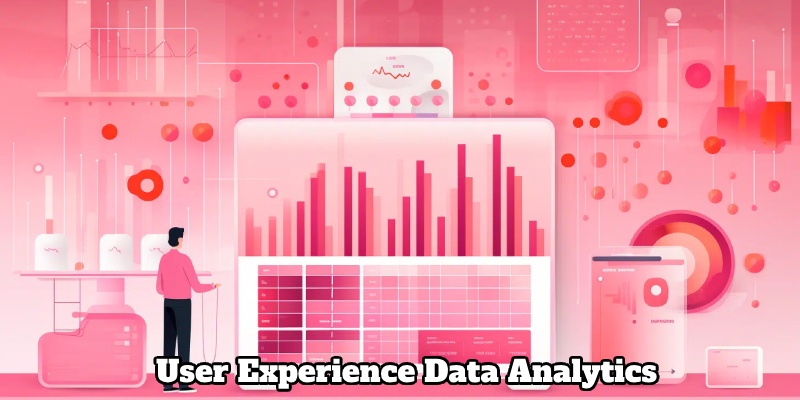User experience data analytics is not just about collecting data about how users interact with a product or service but also a deep analysis process to uncover the motivations behind user behavior. Let’s dig deeper into the importance and challenges of applying user experience data analytics to shape your products and services in the most optimal way for users.
The purpose of using user experience data analytics
The purpose of using user experience data analytics is to gain valuable insights into how users interact with a product, service, or system. This involves collecting, analyzing, and interpreting data related to user behavior, preferences, and experiences to make informed decisions that enhance the overall user experience. Here are several key purposes of employing user experience data analytics:
Understanding User Behavior
user experience data analytics helps in comprehending how users navigate through a product or platform, what actions they take, and where they encounter challenges. Analyzing these patterns provides insights into the user journey.

Identifying Pain Points
By analyzing user interactions, organizations can identify specific pain points or areas where users may struggle or experience frustration. This information is crucial for making targeted improvements to enhance usability.
Optimizing User Interfaces
Data analytics allows UX designers to evaluate the effectiveness of user interfaces. It helps in identifying which design elements work well and which ones may need refinement, leading to the creation of more user-friendly interfaces.
Personalizing User Experiences
Data analytics enables the creation of personalized user experiences based on individual preferences and behaviors. By understanding user preferences, organizations can tailor their offerings to meet the specific needs of different user segments.
Measuring User Satisfaction
Through feedback analysis and user surveys, UX Data Analytics helps measure user satisfaction levels. This information is vital for evaluating the success of a product or service and making adjustments to meet user expectations.
Enhancing Conversion Rates
Understanding user behavior can lead to insights on how to optimize conversion funnels. By identifying points of drop-off or conversion bottlenecks, organizations can implement changes to improve conversion rates.
Continuous Improvement
UX Data Analytics supports an iterative design process. By continuously monitoring and analyzing user data, organizations can implement ongoing improvements, ensuring that products or services evolve to meet changing user needs.
Data-Driven Decision Making
Instead of relying on assumptions or intuition, organizations can use data-driven insights to make informed decisions regarding UX design, feature enhancements, and overall product strategy.
Benchmarking and Comparison
UX data analytics allows organizations to benchmark their performance against industry standards and competitors. This information provides context for evaluating the effectiveness of their user experience relative to others in the same domain.
Optimizing for Multiple Platforms
In today’s multi-platform landscape, users interact with products on various devices and platforms. UX Data Analytics helps in optimizing experiences across different devices and ensures a seamless transition for users.
Data collection method for user experience data analytics
There are various data collection methods for user experience data analytics, and the choice of method depends on the specific goals, context, and nature of the product or service. Here are some common data collection methods used in UX data analytics:
Surveys and Questionnaires
Online Surveys: Conducting online surveys allows users to provide feedback on their experiences. Questions can cover satisfaction, usability, and preferences.
Post-Interaction Surveys: Implementing short surveys immediately after specific interactions or transactions can capture immediate feedback.

User Interviews
One-on-One Interviews: In-depth interviews with users can provide qualitative insights into their experiences. This method is particularly useful for understanding motivations, challenges, and preferences.
Observational Studies
Usability Testing: Observing users as they interact with a product or prototype helps identify usability issues and areas for improvement.
Field Studies: Conducting studies in the user’s natural environment provides context-specific insights into how the product fits into their daily lives.
User Testing with Analytics Tools
Screen Recording: Using tools to record user interactions on a website or application provides visual insights into the user journey and helps identify pain points.
Heatmaps: Analyzing heatmaps visualizes where users click, move, or spend time on a page, helping to understand user attention and engagement.
Behavioral Analytics
Event Tracking: Tracking specific user actions or events within a digital platform provides quantitative data on user behavior.
Conversion Funnels: Analyzing the steps users take in a conversion process helps identify where users drop off or encounter obstacles.
A/B Testing
Comparative Testing: Conducting A/B tests involves comparing two or more versions of a design or feature to determine which performs better in terms of user engagement, conversion rates, or other key metrics.
Social Media Monitoring
Sentiment Analysis: Analyzing user comments and mentions on social media platforms provides insights into how users perceive and discuss a product or brand.
Remote Monitoring
Remote User Testing: Allowing users to test a product remotely and providing feedback helps gather data from a diverse user base without geographical limitations.
Remote Eye Tracking: Using specialized tools to track eye movements remotely provides insights into where users focus their attention.
Usage Analytics
App or Website Analytics: Analyzing data from tools like Google Analytics provides quantitative insights into user traffic, demographics, and interactions.
Biometric Data Collection
Heart Rate Monitoring: Integrating biometric data collection, such as heart rate monitoring, can provide insights into user emotional responses during interactions.
Challenges and solutions in User experience data analytics
User Experience (UX) data analytics brings numerous benefits, but it also comes with its own set of challenges. Here are some common challenges and potential solutions in the field of UX data analytics:
Data Privacy and Security
Challenge: Collecting and analyzing user data may raise concerns about privacy and security.
Solution: Implement robust data protection measures, obtain informed consent, and adhere to relevant privacy regulations.

Data Quality and Reliability
Challenge: Inaccurate or incomplete data can lead to flawed insights.
Solution: Regularly audit and clean data, establish data validation processes, and ensure data sources are reliable.
Interpreting Qualitative Data
Challenge: Extracting meaningful insights from qualitative data, such as user interviews, can be subjective.
Solution: Use standardized frameworks for analysis, involve multiple analysts for triangulation, and prioritize patterns over isolated responses.
Balancing Quantitative and Qualitative Data
Challenge: Striking the right balance between quantitative metrics and qualitative insights can be challenging.
Solution: Integrate both types of data to gain a holistic understanding; use qualitative insights to explain quantitative findings.
Bias in Data Collection
Challenge: Unintentional biases in data collection may lead to skewed results.
Solution: Implement diverse sampling methods, be aware of potential biases, and address them during analysis.
User Engagement and Participation
Challenge: Encouraging users to participate in surveys or testing may be difficult.
Solution: Offer incentives, simplify participation processes, and communicate the value of user feedback.
Real-Time Analysis
Challenge: Real-time analysis of large datasets can be resource-intensive.
Solution: Employ advanced analytics tools, optimize data processing workflows, and prioritize critical metrics for real-time monitoring.
Complex User Journeys
Challenge: Users engage with products across various platforms and touchpoints, making it challenging to track their entire journey.
Solution: Use cross-platform analytics tools, implement journey mapping, and focus on key touchpoints.
Integration of Data Sources
Challenge: Combining data from different sources (e.g., analytics tools, user feedback, customer support) can be complex.
Solution: Invest in integrated analytics platforms, use standardized data formats, and establish data governance policies.
Ethical Considerations
Challenge: Ensuring ethical use of user data and avoiding unintended consequences.
Solution: Establish clear ethical guidelines, conduct regular ethical reviews, and prioritize user well-being over aggressive data collection.

Continuous Adaptation
Challenge: User behavior and preferences change over time, requiring constant adaptation of analytics strategies.
Solution: Stay agile, regularly update data collection methods, and incorporate user feedback into the analytics process.
In conclusion
User Experience Data Analytics is not just a data analysis tool but also a source of creativity and the power to make smart decisions. Understanding user behavior through data helps us better understand them, thereby building experiences that not only satisfy expectations but also exceed them.
